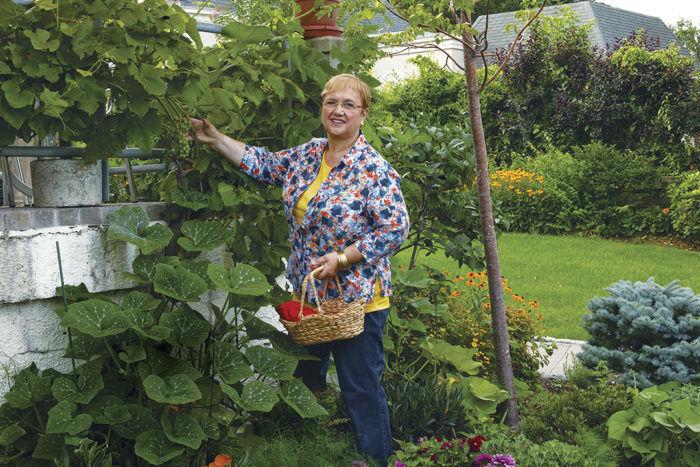
Most people wouldn’t argue that I know my way around a kitchen. What many don’t know, though, is that I know my way around a garden, too. I learned how to garden—and subsequently cook—from my grandmother. Nonna Rosa, who lived in Italy, grew much of the food that was brought into our kitchen. It was during this time in my childhood that I came to a realization: To get the best ingredients, sometimes you had to plant them. There is nothing better than knowing an essential part of a recipe was grown by you and freshly picked by you. Years later, when I bought a home and started my own family in Queens, New York, I knew a garden was something that I couldn’t be without. For over 30 years now, I—along with my mother, Erminia—have started scores of veggies from seed and planted them in my chef’s garden. Aside from ‘Genovese’ basil and ‘Roma’ tomatoes, you’ll find several lesser-known veggies that I consider essential favorites, including the ones featured here.
Click to see recipes Lidia prepared for the pope’s visit to New York.
‘San Marzano Redorta’ tomato is a bigger, better sauce option
Days to maturity: 80
It probably comes as no surprise that the classic sauce tomato ‘San Marzano’ is one of my favorites. The original ‘San Marzano’ is said to come from the Valle del Sarno in Italy. But I also like—and plant more of—‘San Marzano Redorta’. This particular variety is a larger, meatier, and more robust version. ‘San Marzano Redorta’ is named after a mountain in the Alps and produces mountain-size (10 to 12 ounces each) plum tomatoes. The plants are indeterminate and very vigorous, so they need support. The fruit has real tomato flavor and is good to eat fresh in salads as well as to make sauce. Try making a fresh and quick marinara with them to dress spaghetti.
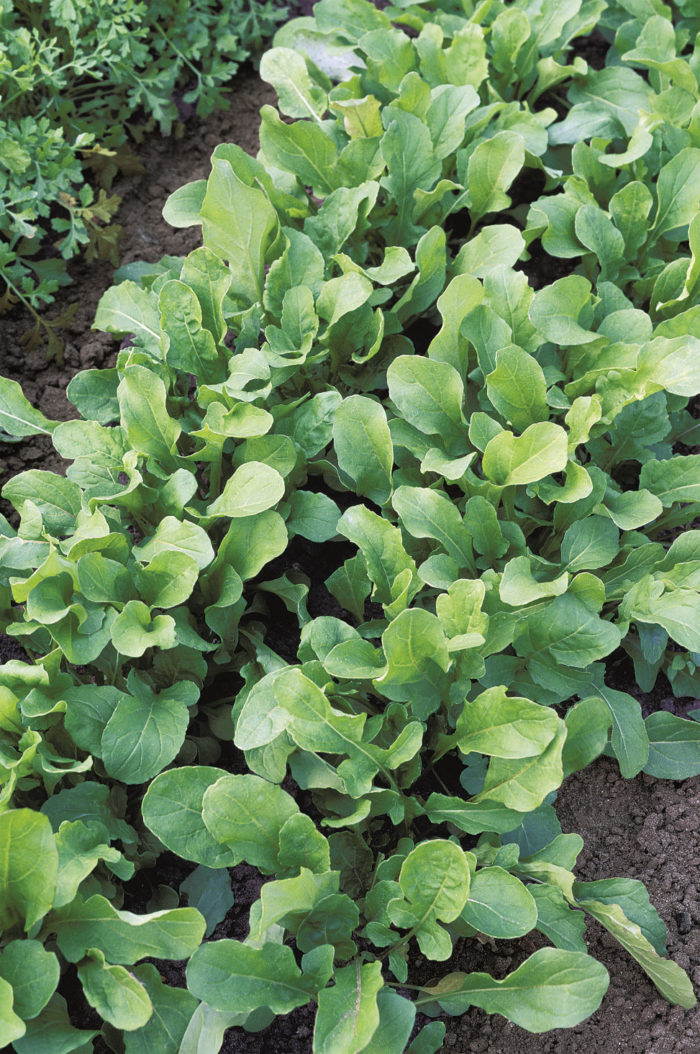
‘Ortolani’ arugula is less bitter than its classic cousin
Days to maturity: 40
This variety tends to have a more consistent taste, color, and growth habit than others that I’ve tried. It has a slightly milder flavor, too, which should appeal to those who find arugula’s flavor to be too bitter or biting. Besides using it fresh in salads, I love making arugula pesto. I simply substitute half the traditional basil leaves with ‘Ortolani’ arugula—then toss the delicious result with pasta.
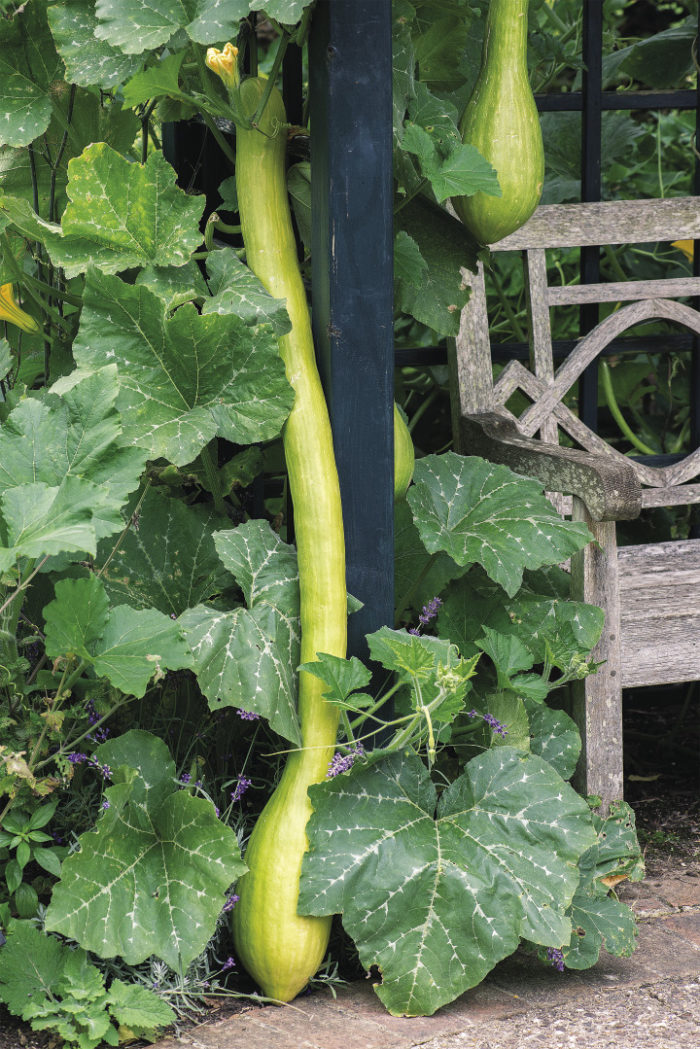
‘Zuchetta Tromba d’Albenga’ squash looks odd but tastes amazing
Days to maturity: 65 to 75
These unique squash are long, curved, and have a large bulbous end—look-ing a lot like a trombone. If you pick them when they are young (6 to 10 inches long), you can eat them like zucchini. If left on the vine longer, they get quite large and can be roasted like winter squash. To say the vines of ‘Zuchetta Tromba d’Albenga’ are vigorous is an understatement as they can easily grow 10 feet in every direction. Since they grow so quickly, they make lots of tendrils to crawl with. I harvest the tendrils (and some of the small leaves) and braise them with broccoli di rabe, some garlic, olive oil, and pepperoncino. I like to plant ‘Zuchetta Tromba d’Albenga’ squash in our ornamental garden because it gets an extra dose of heat from the house’s foundation and it likes to climb up our grapevines and onto the patio.
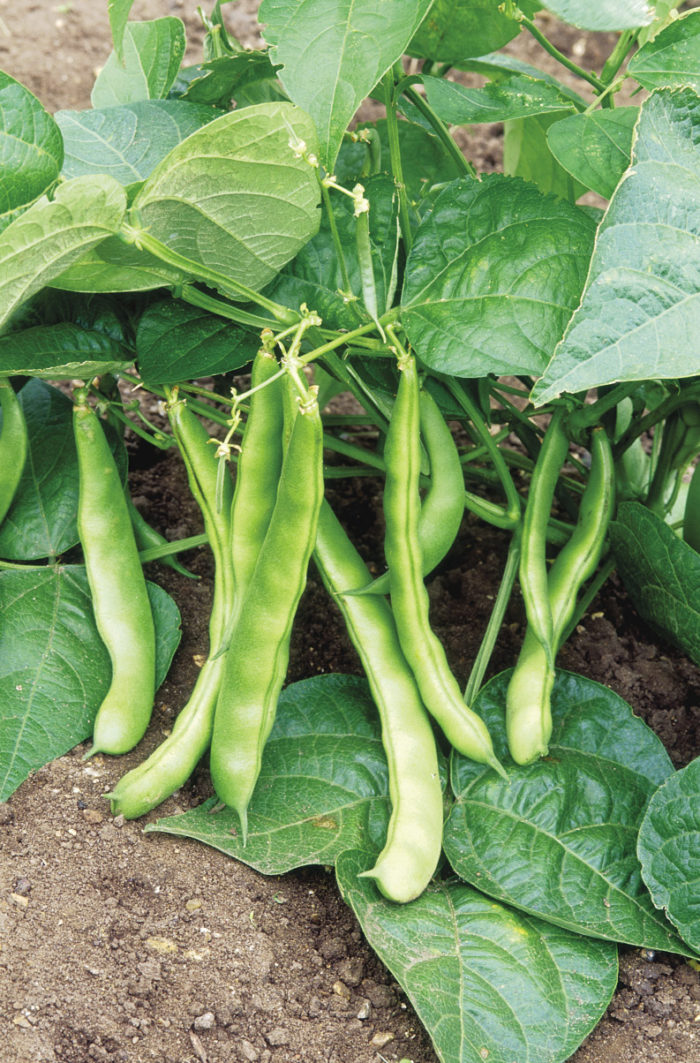
‘Marconi’ green bush bean has a flat shape but crisp flavor
Days to maturity: 55
A very crisp and tasty Roma-type bean, ‘Marconi’ is a truly great vegetable. You can expect good production on these upright plants, although even bush beans need some support. I plant ours along the base of our patio and let the short vines climb up the railings so we don’t have to build trellises. The plants can grow 10 to 12 inches tall; the beans themselves are flat in appearance and very meaty. I like to pick the pods when they are about 5 to 6 inches long and are still tender but not at all horsy. I like to eat this bean boiled with chunks of potatoes, then tossed in a salad while still warm and dressed with olive oil and apple cider vinegar.
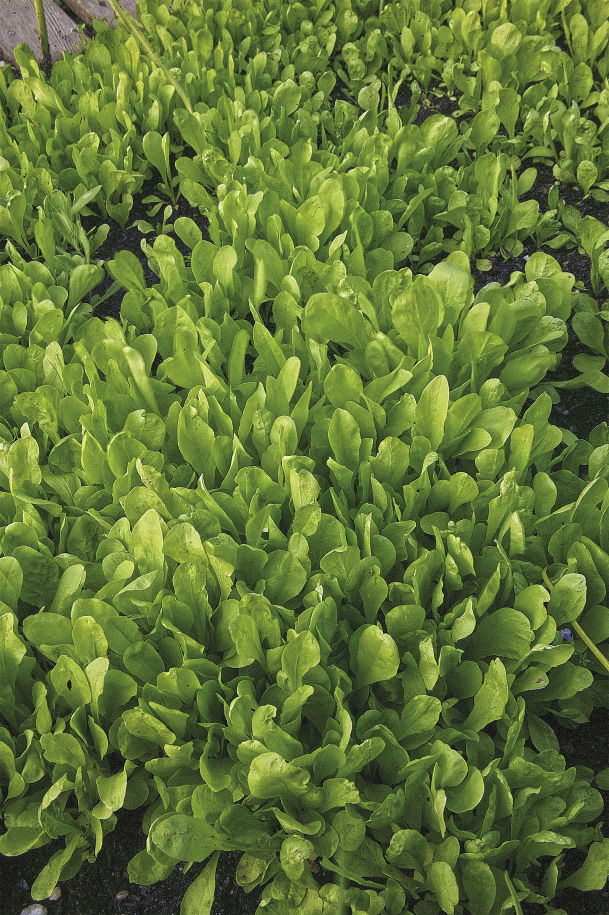
‘Zuccherina di Trieste’ endive can be harvested five times in one season
Days to maturity: 30
Known to many Italians as chicory, this leafy type of endive is a fast grower. The heart-shaped, light green leaves have almost no ribbing and very tiny stems, making them perfect for salads. I plant this variety like I’m sowing grass seed and grow it in a dense mat. Harvest it when the endive is about 2 inches tall by cutting it with scissors at the end of the leaves, leaving the roots in the ground. It will regrow after each cutting, and Grandma Erminia often gets four or five cuttings out of one patch. I’ve even had success overwintering a small planting of ‘Zuccherina di Trieste’ endive by mulching it with dry leaves. The cool temperatures tend to make the leaves sweeter. The simpler the preparation, the better: I love it best tossed in a salad with cooked white cannellini beans.
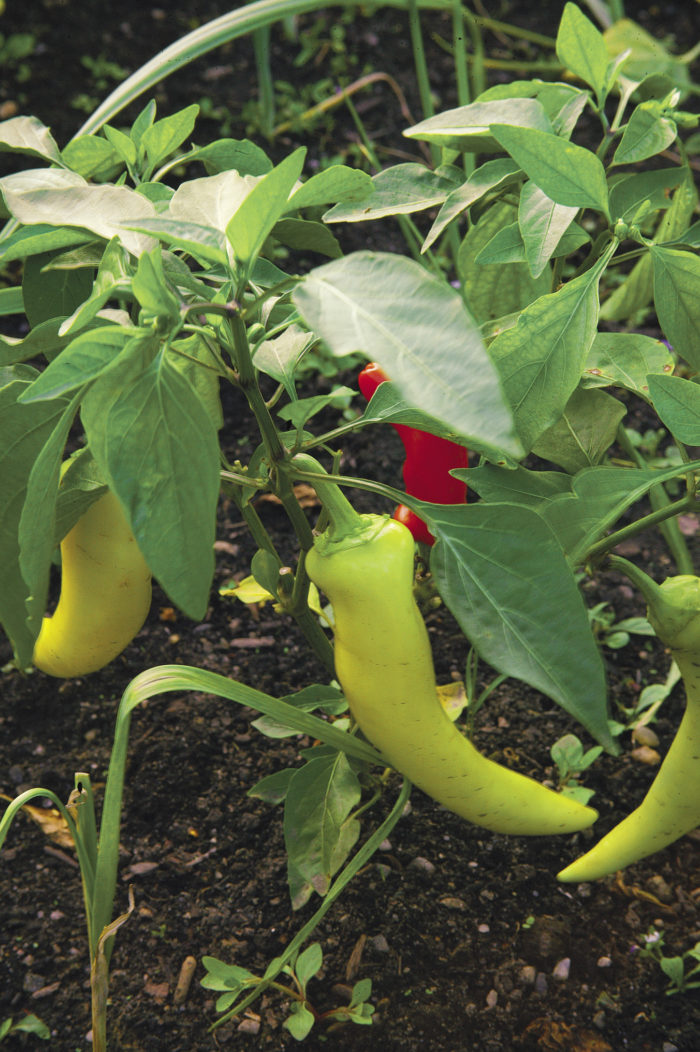
‘Corno di Toro’ pepper looks hot, but is actually sweet
Days to maturity: 75 to 85
The variety of this pepper, very popular in the Piedmont section of Italy, translates to “horn of the bull,” which perfectly describes the shape of its 6- to 8-inch-long fruit. You can purchase seeds for red or yellow varieties, both of which have thick walls (which help them resist sunscald) and an extremely sweet flavor. These plants produce a plethora of fruit, which are ideal for frying or grilling. I love making them into easy appetizers, especially stuffed with tuna salad.

‘Verde a Costa Blanca’ chard thrives in spring, summer, and fall
Days to maturity: 55
This cultivar name translates to “silver and green,” which makes sense given the plant’s huge emerald-colored leaves and thick white stems. As with other leafy greens, you can plant and harvest this chard in spring, summer, and fall. This variety is almost as beautiful as it is flavorful with the tops tasting a bit like spinach and the stalks more like celery. Instead of plucking the whole plant for cooking, Grandma and I collect the larger outside leaves and stalks while we let the center grow.
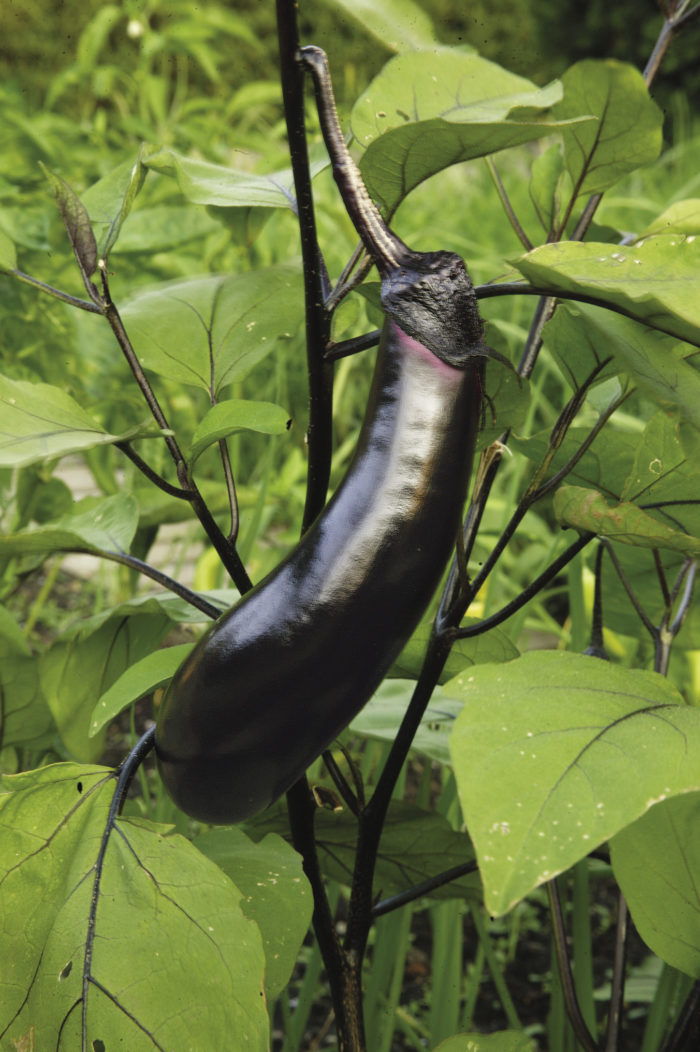
‘Ichiban’ Japanese eggplant produces scores of fruit on sturdy plants
Days to maturity: 85 to 90
Perhaps an unexpected pick for an Italian cook, Japanese eggplant is a staple in my garden and in my kitchen. The thin skin, low seed count, and sweet flesh make it a hit even with those who don’t like traditional eggplant. ‘Ichiban’ has high yields, another advantage over classic varieties. The sturdy plants usually don’t need supports, although when weighed down with lots of fruit, a stake for insurance might be a good idea. If you’re looking for an unexpected yet mouthwatering way to prepare it, try marinating it with mint, olive oil, and lemon juice.
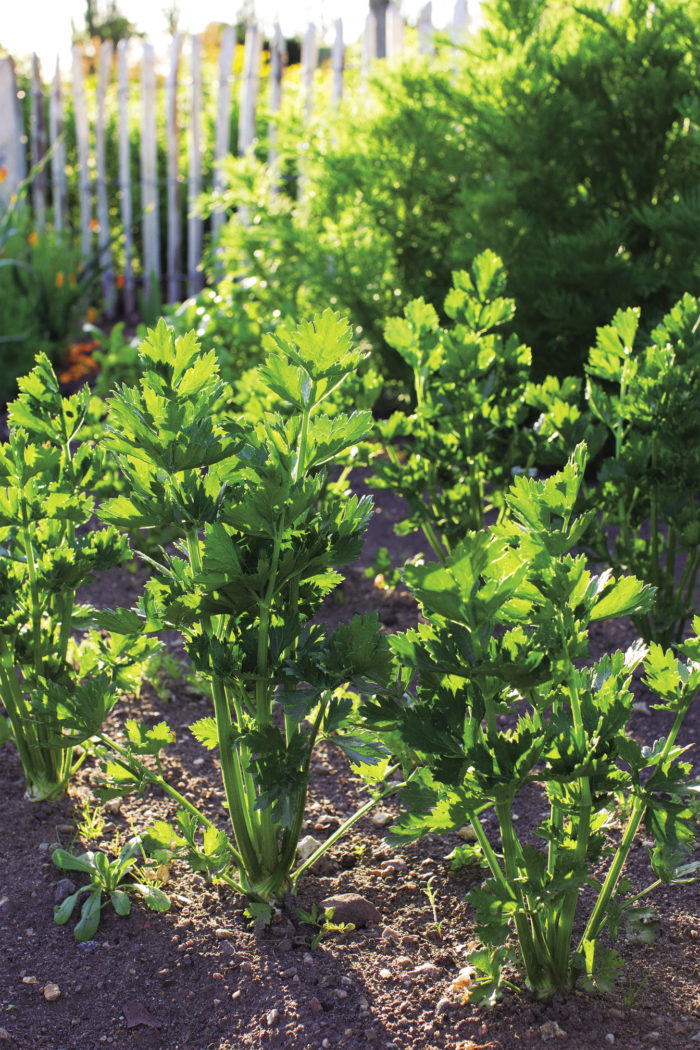
‘Verde Pascal’ celery doesn’t need to be blanched
Days to maturity: 80 to 85 (less if just using the greens)
In Italy, celery is one of the three essential ingredients (along with carrots and onions) that form the base for many, many dishes. I use the greens as well as the stalks, but never go to the trouble of blanching the plants in the garden. ‘Verde Pascal’ is a French variety with dark green leaves and exceptionally sturdy stalks. It is also slow to bolt, which is key for a busy gardener like myself. When starting from seed, be aware that celery is slow to germinate and takes 14 to 21 days to sprout. I harvest the ribs right off the plant and use them in soups or as a base for braised meats. When I have too much, I make celery juice or celery sorbet freeze.
Make Sure it’s Accessible
The most important aspect of a chef’s garden (other than the varieties of vegetables in it) is the accessibility. There is seldom a day when I don’t find myself in the garden, picking or transplanting something. If you select the right array of fruits and veggies, you’ll likely be harvesting more than once a day during the peak season. Therefore, it’s crucial to get the layout of the space right. Here are some things Grandma Erminia and I did to make our garden easy to access.

1. Decking makes great pathways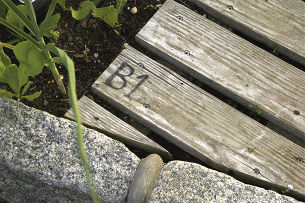
Obviously, pathways are essential for traveling through the garden, but we went a step further with ours and built slightly elevated wooden walkways. We found that these offered more stability (a firm, flat place to put your feet while reaching into the beds) and was an economical material to use that also allowed for proper drainage. Each plank is individually labeled because we pull them up each winter to store them inside so they stay in good shape and then re-lay them the following spring before we start planting the beds.
2. Plant in blocks instead of rows
This rule comes into play with leafy greens that you plan on picking often. It provides an easier way to harvest more faster. For instance, our endive, arugula, kale, and chard are all planted in a thick, dense block. We cut from the patch so often that spacing is never an issue because the plants are never allowed to mature to their full potential. This gives us more production from a smaller space, too. If we planted in rows at the recommended spacing, we’d never have enough produce to keep the kitchen well stocked, and it would take forever to harvest.
3. Put the tall things in front
In a smaller garden like ours, it can be limiting to put only the tallest veggies in the back—you’d quickly run out of room. Instead, certain see-through plants, like strappy leeks, line the wooden pathways. The diaphanous quality of the leeks allows you to see beyond to the rest of the bed, and to reach through and harvest what’s beyond, as well. Without moving them to the front, we likely wouldn’t have had room to squeeze in a decent-size crop.
From Lidia’s Kitchen: Mozzarella and Celery Salad
Everybody is familiar with Caprese salad, the perfect combination of tomato and mozzarella, or mozzarella and roasted peppers. This recipe, made with celery instead, is a fresh and tasty alternative, especially during times of the year when tomatoes are not at their best.

Serves 6
- 2 tablespoons fresh lemon juice
- 2 teaspoons Dijon mustard
- ¼ teaspoon kosher salt
- 3 tablespoons extra-virgin olive oil
- 2 cups celery, thinly sliced on the bias, with some leaves
- 1 pound fresh mozzarella, cubed
- ½ cup walnuts, toasted and coarsely chopped
In a serving bowl, whisk together the lemon juice, mustard, and salt. Then slowly whisk in the olive oil to make a smooth dressing. Add the celery, mozzarella, and walnuts. Toss well with the dressing, and serve.
Lidia Bastianich is a celebrity chef, television host, restaurateur, and author of over a dozen cookbooks, including her latest, Mastering the Art of Italian Cuisine.
Photos, except where noted: Danielle Sherry
Sources:
- Fedco Seeds; Waterville, Maine; 207-426-9900; fedcoseeds.com
- Johnny’s Selected Seeds; Winslow, Maine; 877-564-6697; johnnyseeds.com
- Seeds from Italy; Lawrence, Kans.; 785-748-0959; growitalian.com

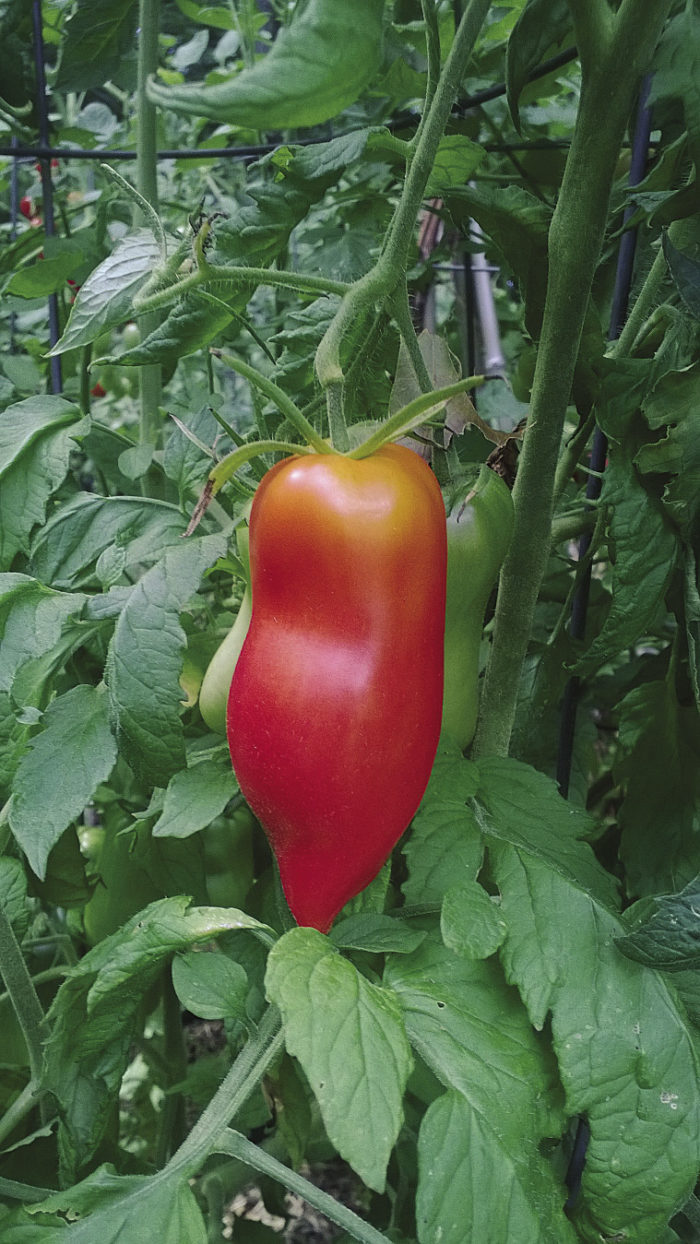

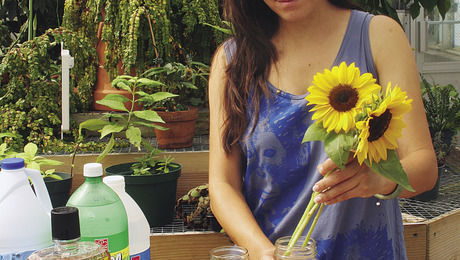
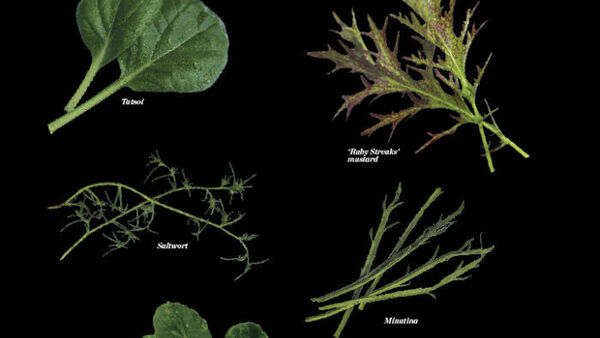













Comments
Log in or create an account to post a comment.
Sign up Log in